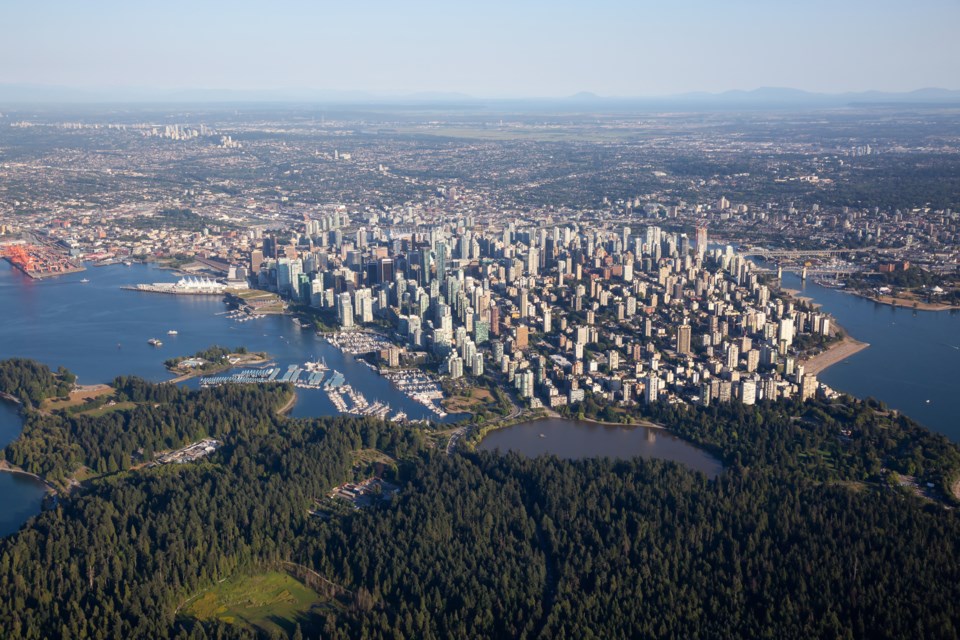Vancouver’s ambitious goal to be the cleanest city in the world is one that is certainly worthy of praise. Introduced in 2018 by the City of Vancouver, the Greenest City Action Plan is a sustainability initiative that aims to have Vancouver become the greenest city in the world by the year 2020. Reaching its carbon emissions goals, however, will be a challenging task — replacing existing fleets of vehicles and building stock that are dependent on fossil fuels are challenges that are difficult for cities to control and make a meaningful impact. That said, the one area where municipalities like Vancouver can have a major impact is on how new buildings are built, and frankly, Vancouver is doing a poor job in this department.
Vancouver has chosen to address sustainability in buildings by mostly focusing on making buildings more efficient in terms of the energy they demand. This means that the city will make developers devote resources to improving the building envelope, essentially making the building hold heat better so that less energy is required for the same size building. This usually takes the form of better insulation and thicker or smaller windows.
While improving a building’s efficiency is certainly not a bad thing, when the energy used to meet the energy needs of that building is made from burning fossil fuels, no matter how efficient the building is, each new building that comes online increases the amount of carbon that’s being emitted each year. Until we stop allowing on-site GHG emissions in new construction, Vancouver will never be able to reach its goal of building net-zero buildings.
From a business perspective, this strategy is also flawed. Building envelope upgrades are expensive and while they may reduce building operating costs for occupants, developers rarely get rewarded for the extra investment in the form of a higher sale price. This leads to developers needing higher property prices in response to the building code changes to encourage them to build and runs counter to the city’s other goals to provide more housing supply in an already constrained environment.
A better policy for the city of Vancouver would be to focus on eliminating on-site greenhouse gas emissions, most of which comes from burning natural gas for space heating and domestic hot water production. The vast majority of electricity in B.C. is generated without the production of GHGs, so any electrification of building heating systems is likely to have a major impact on the GHGs attributable to any building.
Better still, the technology to electrify heating efficiently already exists. Geo-exchange systems that use the ground beneath a building produce no emissions and are much more efficient than traditional electric resistance heating has been around for over 70 years. Vancouver-based companies like SHARC have also developed technology that can recover wastewater heat and use it for domestic hot water at a cost similar to that of a boiler system.
But perhaps the most important feature of a strategy that focuses on eliminating onsite GHG emissions is that it opens the door for third-party energy providers (3PEPs). These companies pay for the cost of a green energy system upfront, helping developers cut construction costs, promoting more development and giving developers a nice incentive to “go green.” 3PEPs are also experts in implementing these technologies, giving comfort to developers who may have been leery about trying something different than they’ve done in the past.
The operating savings of these systems provide become the source for the payments the 3PEP will use to make their money back over time, so residents are no worse off than they would have been had the developer chosen a traditional heating system. These payments are also often fixed in nature, meaning the building’s occupants have certainty over their utility bills and are protected from any energy price increases in the future.
Ultimately, 3PEPs are a great private-sector tool that Vancouver could use to further its ambitious climate goals. Vancouver’s government isn’t likely going to be able to reach its goals alone and will need the support of the developer community to be successful. A relaxing of building envelope requirements in favour of onsite GHG emissions regulations would be a more effective policy to encourage development growth while furthering Vancouver’s sustainability goals.
Lane Theriault is president of Subterra Renewables, which designs, builds, owns and operates low-carbon energy systems for both residential and commercial buildings



